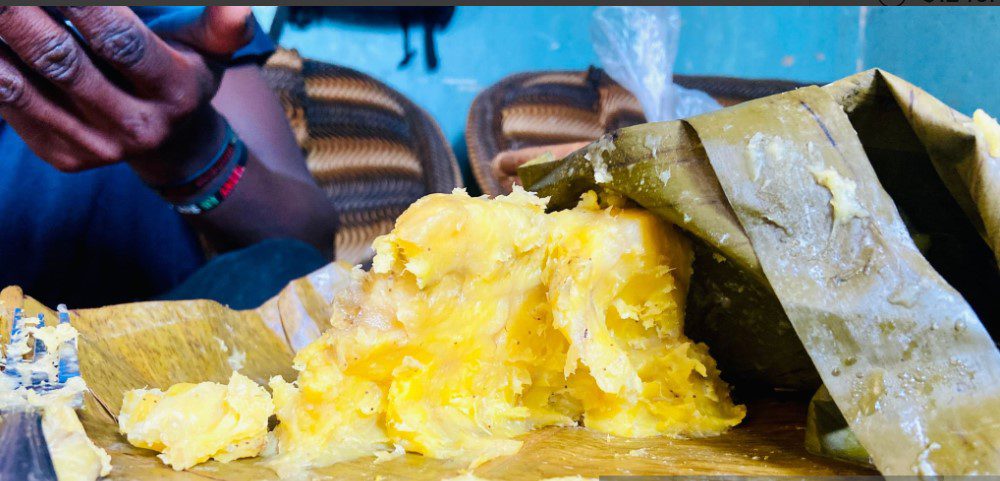What is the National Dish of Uganda? A Taste of Heritage, Heart, and Home
In every country, there’s a dish that tells stories of people, of culture, of love, and of legacy. In Uganda, that dish is matoke. More than just food on a plate, matoke is a connection to the land and a shared experience that binds families, friends, and generations. Its rich aroma drifting from clay pots and charcoal stoves, the sound of laughter as hands gather around a communal meal, and the satisfaction of a warm, nourishing bite this is matoke. To ask, “What is the national dish of Uganda?” is to open the door to a deeper understanding of the country’s identity, and to savor a piece of its vibrant soul.
What is Matoke?
Matoke, sometimes spelled matooke, refers both to a type of banana and the dish made from it. These bananas are small, green, and starchy, different from the sweet bananas commonly eaten raw. Indigenous to Uganda and the surrounding Great Lakes region, matoke is cultivated extensively in the southwestern parts of the country, particularly among the Banyankole and Bakiga communities where it’s not just a staple it’s a symbol of abundance and hospitality.
When Ugandans speak of matoke, they mean more than fruit. They mean the warm, soft, mashed delicacy that forms the heart of many traditional meals. It is steamed, peeled, mashed, and then cooked again—usually with ingredients like onions, tomatoes, and groundnut or meat sauce. Each region, and sometimes each family, has its own unique twist, adding richness and personality to the dish.
A Cultural Emblem
In Uganda, food is more than sustenance. It is community. It is celebration. Matoke takes center stage at weddings, family gatherings, funerals, and everyday meals. Preparing matoke is often a communal affair, especially in rural settings. Women gather in kitchens or courtyards, peeling bananas together, stirring pots with care, sharing stories and laughter. The process is slow, intentional, and full of love.
Among the Baganda people of central Uganda, matoke is so deeply rooted in tradition that a meal without it can feel incomplete. In fact, the word food in Luganda (emmere) is often synonymous with matoke itself. That says a lot about how central this dish is to Ugandan life.
How is Matoke Prepared?
Matoke preparation starts in the banana plantation. Once harvested, the green bananas are peeled, usually with a knife, as the sap can be quite sticky. Traditionally, the peeled bananas are wrapped in banana leaves and steamed over a fire for several hours, which gives them a soft, buttery texture. Once tender, they are mashed inside the same leaves and then served either plain or with a savory sauce.
Some of the most beloved variations of matoke include:
Matoke with groundnut sauce: A thick, rich peanut-based sauce that is smooth and earthy. This version is vegetarian and deeply satisfying.
Matoke with beef or goat stew: A hearty combination where the sweet blandness of matoke balances perfectly with the bold flavors of seasoned meat stew.
Matoke with beans or smoked fish: A wholesome and protein-rich variation that is common in western Uganda.
Rolex with matoke: In urban areas, you’ll occasionally find creative street food twists like combining matoke with Uganda’s popular rolled chapati and egg snack known as rolex.
Whether cooked in banana leaves or in a modern saucepan, the essence of matoke remains the same: warm, filling, and comforting.
More Than Just Food
What makes matoke the national dish of Uganda isn’t just its popularity it’s its symbolism. Matoke is a connection to ancestry, to family traditions, and to Uganda’s agricultural heritage. For centuries, the cultivation of bananas has shaped the lives and economies of Ugandan communities. Even today, matoke farming supports millions of households, providing income, food security, and cultural continuity.
In rural homesteads, a banana plantation is a sign of stability. Parents pass it down to children, and elders use it to teach life skills. You don’t just learn how to grow matoke you learn patience, care, and respect for the earth. This deeply rooted tradition helps keep Ugandan identity alive through generations.
Matoke in Modern Uganda
While matoke remains a symbol of traditional Ugandan cuisine, it has gracefully adapted to modern lifestyles. In urban homes and restaurants, chefs have begun to experiment with presentation, flavor fusions, and pairings. You might find matoke served with avocado mousse, infused with curry spices, or plated as a deconstructed dish in fine dining settings. Yet, despite these innovations, the soul of matoke its comforting simplicity remains unchanged.
Many hotels and safari lodges across Uganda proudly serve matoke to guests, eager to share this culinary treasure with the world. For travelers, it becomes more than a meal it’s an authentic taste of Uganda’s hospitality and warmth.
Why You Should Try Matoke
If you ever find yourself in Uganda, one of the most genuine experiences you can have is sitting down to a meal of matoke. It’s not flashy, it’s not spicy, and it’s not complicated but it is real. It’s the kind of food that fills more than just your stomach. It fills your heart.
Trying matoke is like tasting Uganda’s land, its stories, and its generous spirit. It’s ideal for vegetarians, satisfying for meat lovers, and welcoming for every palate. You don’t need an acquired taste or fancy cutlery. Just bring your appetite and an open mind.
And even if you’re far from Uganda, the growing popularity of East African cuisine means matoke might be closer than you think. Look for Ugandan restaurants in multicultural cities, or try your hand at preparing it at home with green cooking bananas, onions, tomatoes, and your choice of sauce.
Matoke: A Dish to Remember
In a fast-paced world, matoke reminds us of something slower, something kinder. It’s a dish that invites you to pause, to gather, and to appreciate the simple joys of life. It speaks of fields lush with banana trees, of steaming pots on open fires, and of the timeless rhythms of Ugandan life.
So when someone asks, “What is the national dish of Uganda?”, you can say it with pride: it’s matoke. But it’s also more than that. It’s comfort. It’s culture. It’s home.
In Summary: Key Facts About Matoke – Uganda’s National Dish
Name: Matoke (also spelled Matooke)
Made From: Green cooking bananas (plantain-like)
Typical Preparation: Steamed, mashed, and served with sauce
Common Accompaniments: Groundnut sauce, beef stew, beans, or fish
Cultural Significance: Central to Ugandan identity, especially among the Baganda and western tribes
Where to Find It: Homes, street stalls, restaurants, and local celebrations across Uganda
Why It Matters: It’s more than a meal it’s a symbol of unity, tradition, and Ugandan hospitality
Uganda’s matoke is not just a national dish; it’s a national treasure. In its simplicity lies its strength. In its warmth lies its welcome. And in every bite lies the spirit of a nation.





